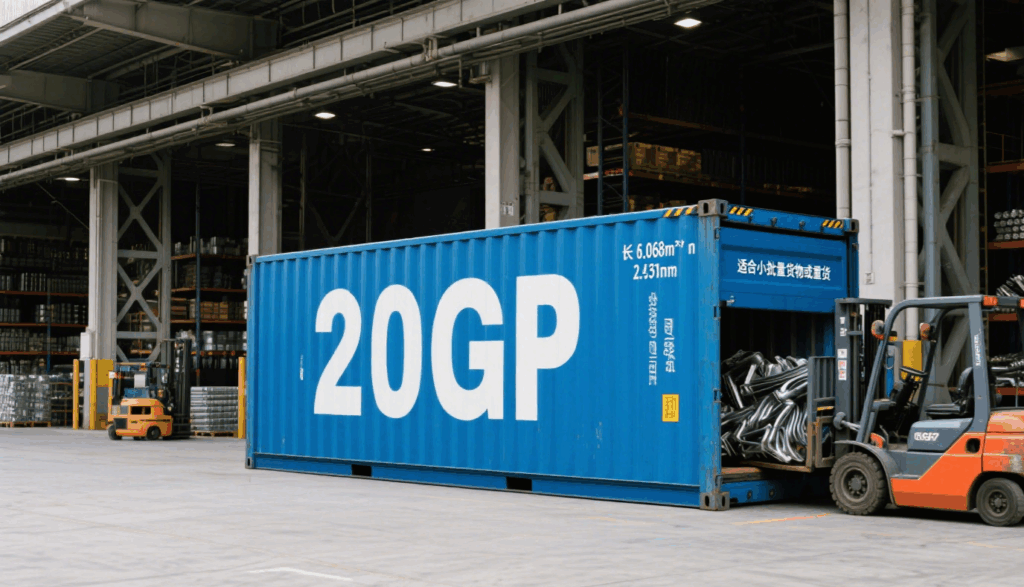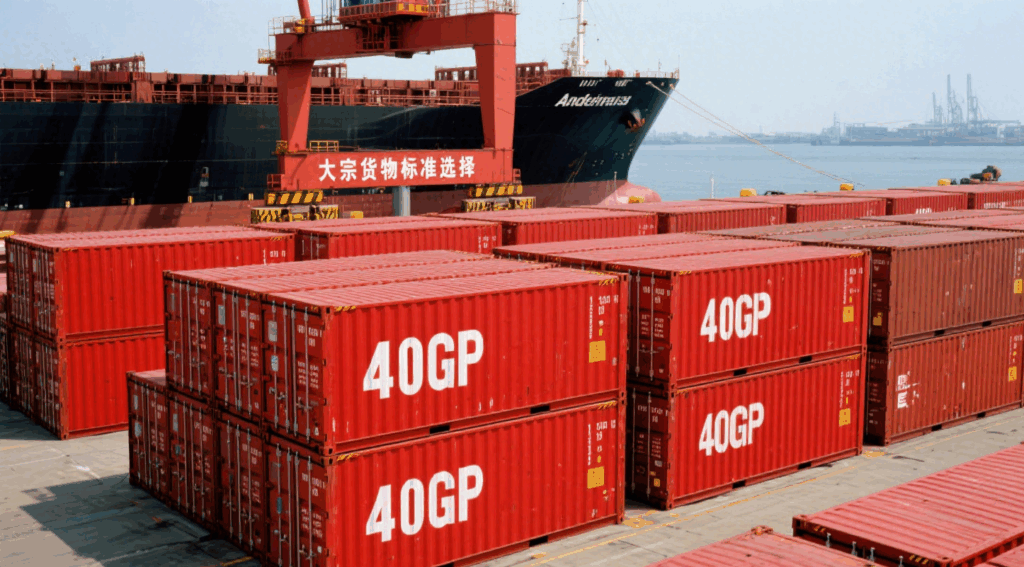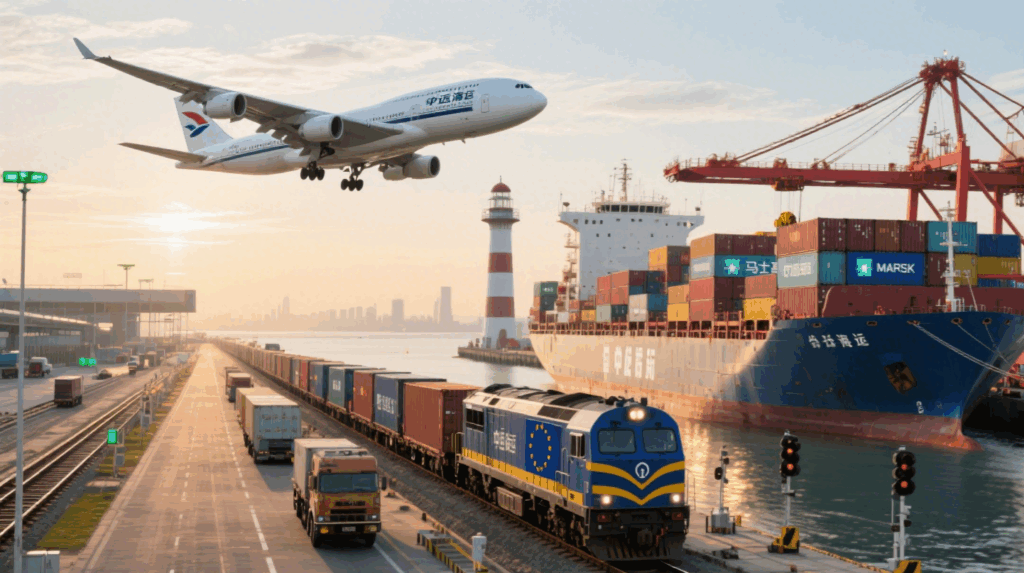Table of Contents
When businesses search for China container shipping, they are often looking for a balance of cost, reliability, and speed. Whether you are moving electronics, textiles, or heavy machinery, container shipping from China has become the backbone of international trade. With China’s vast manufacturing hubs and global shipping networks, importers can rely on standardized container sizes, flexible transport options, and a wide range of forwarder services. In this article, we’ll explain what a China container is, how it works across different transportation modes, the terms and conditions importers should know, how performance differs in various countries, common pitfalls to avoid, and real-world case studies.
What is a China Container?
A China container refers to standardized shipping containers used for transporting goods from China to destinations worldwide. These containers follow ISO standards, making them compatible with ships, trucks, and trains globally.
Types of Containers:
- 20GP (20-foot General Purpose) – Best for small shipments or heavy cargo.
- 40GP (40-foot General Purpose) – Standard choice for bulk goods.
- 40HQ (40-foot High Cube) – Extra height for voluminous goods like furniture.
- Reefer Containers – Temperature-controlled for food or pharmaceuticals.
- Open-Top / Flat-Rack – For oversized machinery.
📌Example: A 40HQ from Shenzhen to Los Angeles can carry up to 68 cubic meters of cargo, ideal for furniture or textiles.


What Does it Do?
China containers streamline global trade by:
- Standardization – Ensuring compatibility across ports and vessels.
- Cost Efficiency – Allowing shippers to move large volumes at predictable rates.
- Security – Goods remain sealed until customs clearance at the destination.
- Flexibility – Suitable for sea, air-sea combined, and even rail transport within Asia-Europe corridors.
Containerization has reduced cargo handling costs by more than 30%, enabling small businesses to participate in international trade.
Container Use in Different Modes of Transportation
| Mode of Transport | Container Use | Cost per 40HQ (Approx) | Transit Time | Best For |
|---|---|---|---|---|
| Sea Freight | Full container load (FCL) or less than container load (LCL) | $2,000–$4,000 | 20–35 days | Bulk shipments |
| Air Freight | Palletized containers (ULD) | $8,000–$12,000 | 3–7 days | Urgent, high-value goods |
| Rail Freight (China–Europe) | Standard containers loaded on trains | $6,000–$8,000 | 15–20 days | Mid-speed, mid-cost |
| Truck Freight (Cross-Border Asia) | Containers on trucks | $3,000–$5,000 | 5–12 days | Regional shipments |
📌Important: For routes like China–Australia, only sea and air freight are practical. Rail freight is not available.

Relevant Terms and Conditions
When shipping with a China container, importers should understand these terms:
- FOB (Free On Board) – Seller delivers goods to the port; buyer pays for freight.
- CIF (Cost, Insurance & Freight) – Seller covers freight and insurance to destination port.
- DDP (Delivered Duty Paid) – Seller handles customs and duties until goods reach buyer’s warehouse.
- Demurrage & Detention – Charges apply if containers are not returned on time.
- Customs Declarations – Accurate HS codes and packing lists are mandatory.
Failure to comply with terms can lead to $500–$1,000 per container in penalties.
Performance Differences by Country
| Route | Avg. Transit Time | 40HQ Cost (USD) | Customs Challenges |
|---|---|---|---|
| China → USA (Los Angeles) | 20–25 days | 2,800–4,200 | Strict inspections, long clearance |
| China → Europe (Rotterdam) | 28–35 days | 2,600–3,800 | VAT documentation required |
| China → Africa (Lagos) | 35–40 days | 5,800–7,200 | Congested ports, delays |
| China → Middle East (Dubai) | 18–22 days | 2,400–3,200 | Smooth clearance |
| China → Australia (Sydney) | 16–20 days | 2,200–3,000 | Biosecurity inspections |
📌Observation: African routes face higher costs due to limited infrastructure, while Middle East routes offer speed and efficiency.
How to Avoid Common Problems
Importers often face issues such as unexpected delays, damaged goods, or hidden charges. Expert forwarders recommend:
- “Always confirm the free days for container use at destination before shipment,” says TopChinaFreight consultants.
- Book in advance during peak seasons (Sept–Dec) to avoid price surges.
- Use cargo insurance for high-value shipments.
- Verify all documents (packing list, invoice, HS code) before customs clearance.
- Work with a trusted China forwarder agent for local handling.
Real-World Case Studies
Case 1: China → Ghana (Accra)
- Goods: 40HQ container of electronics (TVs, laptops, accessories)
- Unit Price: $250 average per item
- Total Value: $120,000
- Transport Mode: Sea freight (FCL)
- Route: Shenzhen → Singapore (transshipment) → Tema Port (Ghana)
- Cost Breakdown:
- Ocean Freight: $6,200
- Insurance: $450
- Destination Charges: $900
- Total: $7,550
- Transit Time: 32 days
- Outcome: Despite a customs inspection delay of 4 days, the shipment was delivered successfully. Partnering with a Ghanaian customs broker reduced storage fees.
Case 2: China → Australia (Sydney)
- Goods: Clothing and textiles, loaded in a 20GP container
- Unit Price: $15 average per item
- Total Value: $30,000
- Transport Mode: Sea freight (FCL)
- Route: Ningbo → Sydney Port
- Cost Breakdown:
- Ocean Freight: $2,150
- Insurance: $180
- Destination Charges: $620
- Total: $2,950
- Transit Time: 18 days
- Outcome: Shipment faced strict biosecurity inspections in Australia. By providing clear fabric composition certificates, clearance was achieved without penalties.
Conclusion
China container shipping is the backbone of international logistics, enabling global businesses to import goods efficiently and securely. By understanding container types, transport modes, relevant shipping terms, and country-specific challenges, companies can avoid costly mistakes. Partnering with a professional China forwarder agent ensures smooth operations and predictable costs. Whether you’re shipping electronics to Africa or furniture to the USA, choosing the right container strategy will make global trade more profitable.
- Consult TJ China Freight Forwarding for the lowest quote. They will provide you with reliable, cost-effective service.
FAQ:
Q1.What size container is best for fragile items?
A 20GP container is often better, as it limits stacking and damage risks.
Q2.How can I track my China container shipment?
Most carriers provide online tracking with a container number.
Q3.Which ports in China handle the most containers?
Shanghai, Ningbo, and Shenzhen are the busiest container ports.
Q4.Can I share a container with other importers?
Yes, through LCL (Less than Container Load) services.
Q5.What documents are required to release a container?
Bill of Lading, invoice, packing list, and customs clearance papers.

